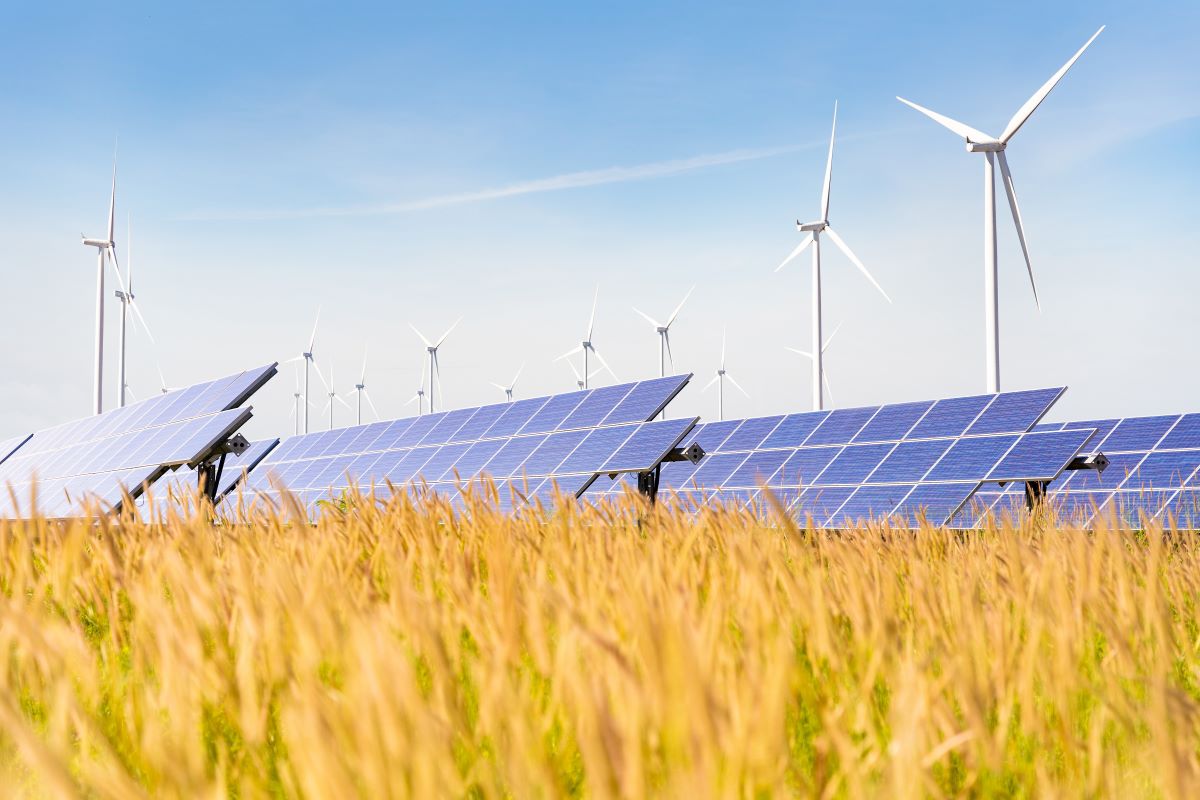8-minute read
Quick summary: DERMS forecasting empowers utilities to integrate renewable energy sources more effectively by predicting generation, storage, and demand, supporting grid stability and resilience.
As utilities navigate the challenge of integrating renewable energy sources while maintaining grid stability, distributed energy resource management systems (DERMS) offer a solution by enhancing coordination of solar panels, wind turbines, battery storage systems, and other distributed renewable sources. DERMS platforms also deliver critical forecasting capabilities that help utilities anticipate production from DERs, manage the fluctuating availability of stored energy, and gauge overall demand. These capabilities are further enhanced through integration with Advanced Distribution Management Systems (ADMS) to improve utility network operations. The utility is thus better prepared to make informed decisions about when and how to dispatch resources, enabling a resilient grid that can withstand peak demand periods and unexpected fluctuations.
Understanding DERMS forecasting
DERMS forecasting helps utilities predict the availability and demand surrounding distributed energy resources. This forecasting is essential for effective management of resources like rooftop solar, wind energy, and battery storage systems, enabling more precise planning and resource allocation.
By accurately predicting generation and demand, utilities can better anticipate when and where electricity will be needed, reducing the likelihood of power shortages or surpluses that can lead to costly imbalances. Reliable forecasting also supports decision making in real time, allowing grid operators to manage resources based on changing conditions such as unexpected weather events or spikes in energy consumption.
Article continues below.
WEBINAR
The DERMS journey: Keys to successful implementation
WHITE PAPER
Planning for net-zero utilities: Integrating renewables and DERs
Types of DERMS forecasts
Generation forecasting
Given the variable nature of sunlight, wind, and other renewable resources, accurate DERs forecasting is essential for understanding how much energy will be available at any given time. Utilities use generation forecasts to predict output from solar photovoltaic (PV) systems and wind farms, which allows them to plan for and accommodate fluctuations.
Solar irradiance, cloud cover, wind speed, and temperature all influence generation forecasts. Equipment performance also plays a significant role, as degradation in solar panel efficiency or wind turbine functionality can impact overall energy production. By considering these variables, utilities can develop DERs forecasting that works in conjunction with a proper orchestration strategy to optimize and maintain balance of renewable resources, avoiding over-reliance on traditional generation sources. Utilities also learn from these forecasts to improve their generation strategies, enhancing their ability to manage and integrate renewable energy sources effectively.
Energy storage forecasting
Energy storage systems, particularly batteries, play a critical role in balancing supply and demand by storing excess energy during periods of low demand and discharging it when demand increases. Energy storage forecasting helps utilities manage charge and discharge cycles efficiently, ensuring that stored energy is used when it’s most needed and at the lowest cost. By factoring in variables like energy prices, weather conditions, state-of-charge, and demand patterns, storage forecasts enable utilities to optimize the operation of their storage assets while also reducing the need for expensive peak-time generation.
Net load forecasting
Net load forecasting involves predicting the difference between total energy demand and the amount of energy generated from renewable sources. By understanding this net load, utilities can determine the additional energy required to meet demand after accounting for renewable generation. Net load forecasts allow the utility to ensure that capacity is available to meet both regular and peak demand levels. If net load forecasting indicates a shortfall, utilities can proactively dispatch resources like battery storage or request additional generation from connected solution providers to prevent grid instability.
By considering the variables in renewable energy sources, utilities can develop reliable forecasts that work in conjunction with a proper DER orchestration strategy to optimize and maintain balance of renewable resources, avoiding over-reliance on traditional generation sources.
Forecasting methodologies in DERMS
To generate accurate predictions, utilities rely on various forecasting methodologies, which allow grid operators to anticipate and manage the variability of renewable energy sources. Two of the most commonly used methodologies in DERMS forecasting are time series models and machine learning techniques. Our expertise in machine learning and data analysis enables us to accurately forecast load patterns, filling a critical gap in predicting the behavior of DERs.
Time series models
Time series models analyze historical data patterns to make future predictions based on trends and seasonal fluctuations. They are relatively straightforward to implement, and their primary strength lies in their reliability for short-term forecasts. However, they may be less effective for longer-term forecasts where external variables, such as sudden weather changes, can impact accuracy.
Machine learning techniques
Machine learning techniques, particularly neural networks, have become increasingly common in DERMS forecasting. Capable of managing complex data inputs—including weather conditions, historical consumption and generation data, and real-time grid status—neural networks are especially effective in generating reliable predictions from diverse and interdependent variables. For instance, neural networks can incorporate real-time data on solar irradiance, temperature, and cloud cover to forecast solar generation output with high precision and analyze economic indicators and social behavior trends to provide accurate load forecasts.
Grid operators and energy resource management
Grid operators play a critical role in managing the flow of energy on the grid, ensuring that supply meets demand in real-time. The integration of DERs into the grid has introduced new challenges for these operators, who must now navigate a more complex and dynamic energy landscape.
Energy resource management (ERM) is a key capability that enables grid operators to optimize the use of available energy resources, including DERs. ERM involves the use of advanced technologies, such as machine learning and artificial intelligence, to forecast energy demand and supply accurately and to optimize the dispatch of energy resources.
Grid operators must also consider the impact of voltage constraints, grid stability, and other technical factors when managing energy resources. The use of DERMS can significantly aid grid operators by providing real-time visibility into energy consumption and generation, enabling the optimization of energy dispatch.
By leveraging ERM and DERMS, grid operators can improve the efficiency and reliability of the grid, reduce costs, and enhance customer satisfaction. As the energy market continues to evolve, the importance of ERM and DERMS will only grow, enabling grid operators to manage the complex interactions between DERs and the grid more effectively.
How DERMS forecasting supports grid reliability
By accurately predicting when and where renewable generation will occur, utilities can reduce reliance on costly, fossil-fuel-based power plants and instead utilize renewable resources whenever possible. Ongoing efforts in expanding forecasting capabilities to meet evolving utility needs are crucial. This approach not only cuts operational costs, but also enhances the utility’s ability to meet sustainability goals. Additionally, effective forecasting helps utilities avoid the financial losses associated with overproduction, which occurs when energy supply exceeds demand and generation resources must be curtailed.
Through enhanced DERMS forecasting, utilities are better equipped to balance cost, reliability, and sustainability. By ensuring that the grid can accommodate increasing amounts of renewable energy without compromising stability, accurate forecasting positions utilities to lead in the transition toward a cleaner and more resilient energy future.
Benefits of DERMS forecasting
DERMS forecasting also allows utilities to optimize energy dispatch, reducing the need for expensive peak-time generation and improving the overall efficiency of the grid. This optimization not only cuts operational costs, but also enhances the resilience of the grid by enabling utilities to anticipate and respond to potential disruptions and outages.
Additionally, DERMS forecasting can help reduce energy costs by enabling utilities to optimize energy procurement and minimize waste. The benefits of DERMS forecasting extend beyond utilities and grid operators to consumers, who can enjoy improved energy efficiency and reduced energy costs.
As the energy market continues to evolve, the importance of DERMS forecasting will only grow, enabling utilities to manage the complex interactions between DERs and the grid more effectively. By leveraging DERMS forecasting and other advanced technologies, utilities can create a more sustainable, resilient, and efficient energy system, unlocking the full potential of DERs.
Driving the future of grid resilience with advanced DERMS forecasting
Accurate, data-driven forecasts empower utilities to manage DERs with precision, transforming the challenges of renewable integration into opportunities for greater efficiency and sustainability. By tapping into advanced DERs forecasting methodologies, utilities can ensure grid reliability while also reducing costs and optimizing the use of clean energy sources.
The move toward a more decentralized and renewable-driven grid demands sophisticated tools that can handle the unpredictable nature of renewable resources. Investing in DERMS forecasting strengthens utilities’ capacity to integrate renewables efficiently and sustainably while also enhancing grid reliability.

Powering a sustainable tomorrow
We partner with utilities to help them build a more resilient grid and move towards a cleaner, brighter future through
- Smart automation
- Asset image analytics
- DERMS implementation
- Analytics & predictive insights
- Cloud optimization


